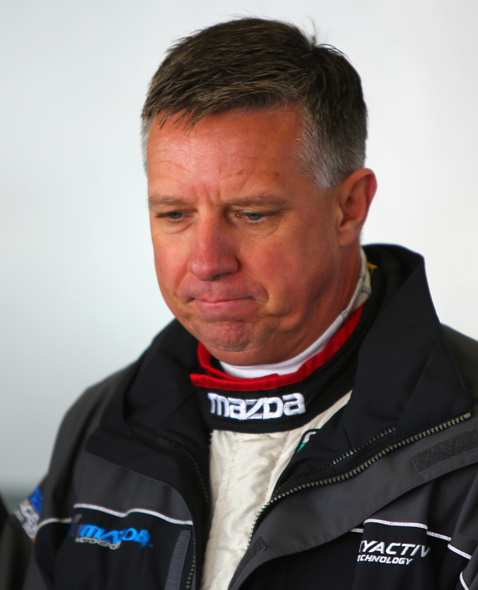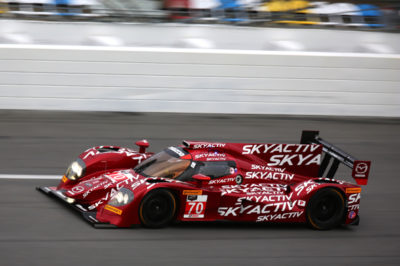Good competitors know their strengths and play to them; great competitors know their weaknesses and work to fix them.
After a fantastic season in Grand-Am GX, where the Mazda6 SKYACTIV-D Clean Diesel won nine races and the manufacturers championship, expectations are high as Mazda and its race partner, SpeedSource Race Engineering, transition the same engine that powered the GX car into an LMP2 prototype. However, while the team certainly knows what the strengths of the car will be, right now, as the car is developing, they must focus on the weaknesses.
“It’s trying to manage the program and expectations from the beginning,” says Tom Long, who will drive the No. 70 alongside SpeedSource principal Sylvain Tremblay. “Obviously there is a ton of engineering that’s gone on just to get the program to where it is. Right now, speed is not the concern. If we can get the reliability Mazda is known for, and we can keep that in place all season, I think the speed will come, because we can keep turning up the wick on that SKYACTIV engine.”
Right now, the engine is not at its peak output because the copious torque produced by the turbo diesel is hard on the rest of the drivetrain. That torque will be the car’s greatest strength at a later date, when the team can use it.
 “Torque is obviously not great if you can’t put it to the ground,” says Tremblay. “So that’s what we’re trying to do, manage the torque that it makes in this particular spot in the powerband. If we can get the gearing right and get the car to handle properly, then maximize that torque with these tires, then we’ll have a very competitive package. It’s going to race differently than some of our V8 brethren, but that’s fine.”
“Torque is obviously not great if you can’t put it to the ground,” says Tremblay. “So that’s what we’re trying to do, manage the torque that it makes in this particular spot in the powerband. If we can get the gearing right and get the car to handle properly, then maximize that torque with these tires, then we’ll have a very competitive package. It’s going to race differently than some of our V8 brethren, but that’s fine.”
Tremblay’s use of the words “going to” indicates that they’re not there yet. Indeed, at the Roar Before the 24 test, the team discovered that they had to dial things back a bit and went slower than they did in private testing. More cars on the track meant more rubber on the asphalt and more grip – causing more driveline problems than they expected. If that situation returns on race day, the Mazda prototypes could spend a lot of time in the pits – not because they’ve broken something, but to make sure they don’t. The more the cars circulate, the more the team learns, and learning is the goal for the first race of the TUDOR United SportsCar Championship, the Rolex 24 at Daytona.
“If we’re crashed or parked, we’re not learning anything,” says Tremblay. “We’re going to have quite a defensive approach. We know we don’t have the speed, so we have to drive the cars differently. This is a lot more give than take for this particular Rolex. We’re going to focus on trying to get as far into the race as possible.”
That means that if the engineers see something they don’t like on the telemetry, the car may come in for replacement of parts that aren’t broken, just to make sure they don’t break.
“For us, reliability is the number one thing. We know we’re taking a hit on speed. We’re OK with that. There are a lot of established teams with cars that go real fast. That’s not where we’re at.”
Many other LMP2 teams with many more hours in their race packages will find themselves struggling as well; these cars weren’t built for tracks like Daytona. But Mazda and SpeedSource, especially, will likely find themselves far from where they’d like to be as the race winds down. But as long as they find themselves still circulating, that’s all that matters.
As they say, get the reliability and the speed will come.


 ACCESSIBILITY
ACCESSIBILITY